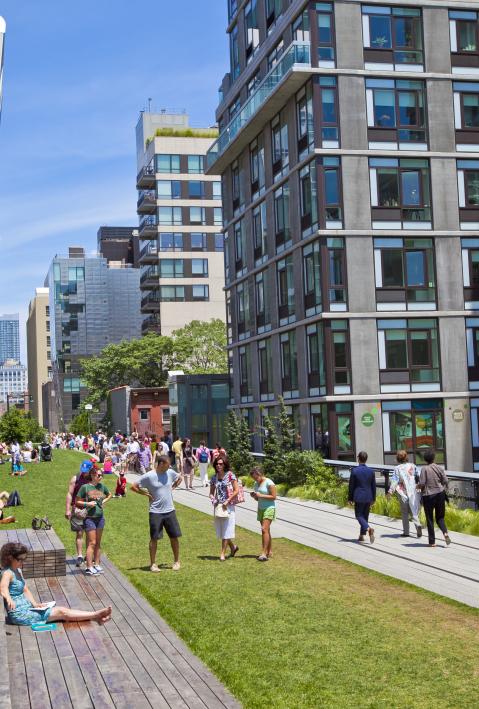
Shared pathways to net zero in Korea and Germany
News publ. 10. Dec 2025
Insight by Franziska Schreiber

Today, cities function as a melting pot for people with differing cultural backgrounds, religions, interests, and social statuses. As a result, cities are not only growing in population, but are also becoming increasingly diverse. The impact of immigration and ethnic diversity on the urban fabric is being discussed in countries around the world, yet with particular intensity in the European Union due to the recent influx of refugees. However, cities are not only facing increasing heterogeneity, but also growing economic inequality and spatial segregation. More than two-thirds of the urban population lives in cities where the income gap has widened sharply in the past three decades.
Cities and municipalities thus have to deal with the challenges of absorbing diversity and counteracting inequality. These challenges are often intertwined and must be approached holistically. In this context, figuring out how to ensure and strengthen social cohesion in times of diversity and rising inequality becomes critically important. How do we ensure that urban dwellers can fully participate in and benefit from urban life? What is needed to allow for community building, a feeling of belonging, and interaction among strangers of different social and ethnic backgrounds? And, how do we counteract social and spatial exclusion?
The search for solutions to inequality and socioeconomic polarisation often leads to common responses such as more restrictive immigration policies, investments in social and affordable housing, and a better regulated employment market. Most of these policies need to be translated into urban solutions. Thus, the role of urban planners in fostering social cohesion should not be underestimated. While they cannot solve the roots of social and economic problems, they can plan for well-connected urban patterns and functioning public spaces that facilitate interaction and social mixing.
As author and renowned urban planner Jan Gehl rightly states: if we want to create “cities for people” or “people-friendly” cities, urban planners need to apply the human perspective, carefully observe and analyse people’s behaviour in the urban realm, and create city spaces as true meeting places. Experiences from around the world demonstrate that four planning and design approaches have been particularly successful in promoting social cohesion and providing spaces of encounter and interaction.
First, land-use planning is an important tool for guiding and enabling balanced urban development. It is crucial that it not only takes economic aspects into account, but also considers environmental and social aspects. For example, city-owned land and properties should not simply be sold at auction, but should consider other values, such as community building or ecological benefits. This would also allow initiatives and projects like community gardens to remain in the communities. The profound consequences of privatisation on the urban realm can be observed in cities around the globe: the quantity of spaces where new forms of social relations can take shape is gradually diminishing. It is thus essential that land-use planning takes a more holistic and balanced approach to handling city-owned land and properties to preserve non-commodified urban spaces.
Second, transit-oriented development (TOD) has become a popular approach to creating inclusive and connected communities through spatial planning. Based on the principle of designing high-quality mixed-used areas that are pedestrian and cycle-friendly, and in close reach of transit stations and other means of public transport, TOD can facilitate socioeconomic and cultural diversity. The design of mixed-use areas should thereby follow the idea of creating an “urban village” where various facilities and services are provided that cater to the needs of different social groups. TOD offers numerous environmental benefits and helps residents who can’t afford a car to overcome transport poverty.
Third, the upgrading of street networks can have a great impact on the vitality and integration of a given area. Streets are not only means of transportation but also fundamental shared public spaces providing for numerous social, cultural, and economic activities. Examples such as Medellin, Colombia, show that the reorganization of street patterns for enhanced connectivity and mobility can help overcome spatial segregation and support the regeneration and re-integration of entire neighbourhoods into the city’s fabric. Such a street-led approach has been particularly successful in transforming informal settlement areas, which are often characterized by the absence of public spaces and streets.
Fourth, public spaces should be designed as meeting points to allow people to meet and interact on ostensibly neutral ground. Small interventions in public spaces, such as improvements to bench seating, or closing streets to car use, can already make a huge difference. For example, the location of street furniture has a compelling effect on how public spaces are used and accepted and on how long and intensively people stay and interact with strangers.
However, to ensure that the above mentioned planning and design interventions do not remain one-off, stand-alone measures, it is critical that they are embedded in national policies that involve a range of approaches in education, health care, employment, housing, and finance. Urban planners can then help to translate these policies into local action and link them to the most suitable planning and design measures.
This blog post has borrowed liberally from "The Inclusive City: Urban Planning for Diversity and Social Cohesion", chapter 18 of "State of the World 2016" by Worldwatch Institute. Thanks to Island Press for permitting the publication of this post.